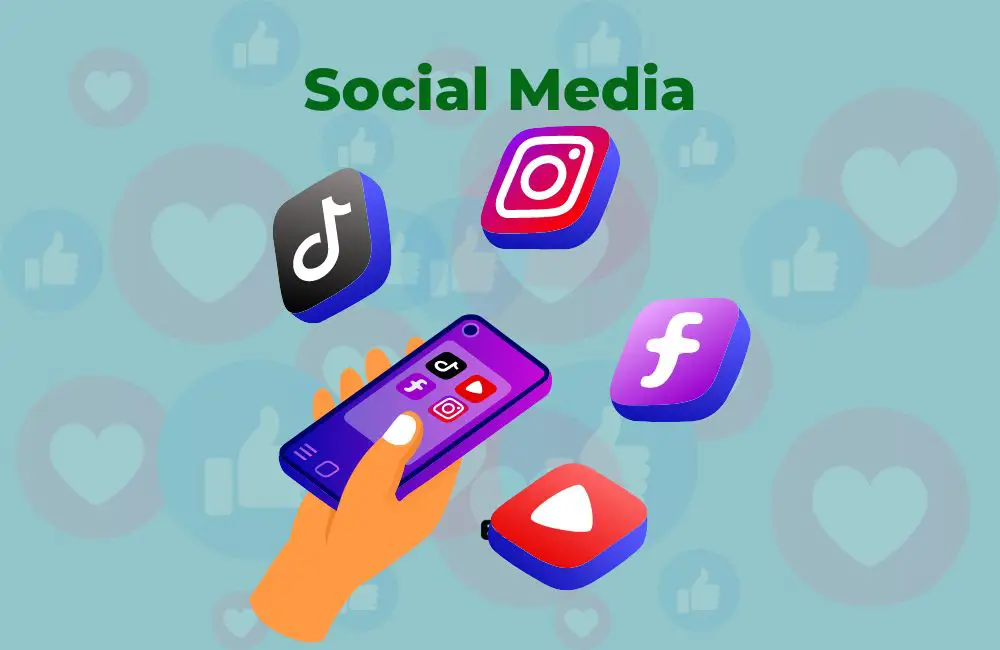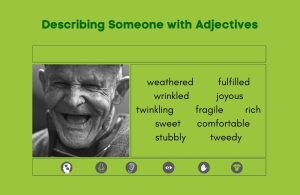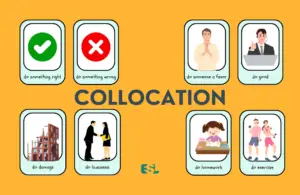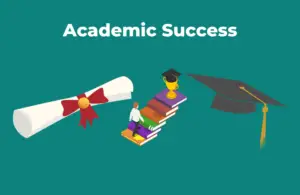Understanding the dynamic world of social media can often feel like learning a new language. A constantly evolving list of terms and phrases can leave even the most tech-savvy among us feeling a bit out of the loop.
This article provides a comprehensive guide to the essential social media vocabulary that you need to navigate the online world effectively. Each section focuses on a particular area of social media, offering definitions, usage examples, and practical applications.
If you are searching for an effective English language vocabulary builder, try Word Power Made Easy: The Complete Handbook for Building a Superior Vocabulary (Amazon Link). This time-tested classic has helped millions achieve mastery of English and improve their communication skills in business, the classroom, and in life.
Table of Contents
- 1. General Social Media Terms
- 2. Facebook-specific Vocabulary
- 3. Twitter-specific Vocabulary
- 4. Instagram-specific Vocabulary
- 5. LinkedIn-specific Vocabulary
- 6. YouTube-specific Vocabulary
- 7. TikTok-specific Vocabulary
- Sample Conversation: Using Social Media Vocabulary for Smart Online Interactions
- In Conclusion
- 10 Frequently Asked Questions Related to Common Social Media Vocabulary for Smart Online Interactions
1. General Social Media Terms
Before diving into the specific terms used on individual platforms, let’s start with some general terms widely used across social media platforms.
| Word/Phrase | Meaning/Usage | Example Sentences |
|---|---|---|
| Hashtag | A word or phrase preceded by a hash sign (#), used on social media to identify messages on a specific topic | “Use the hashtag #TBT for Throwback Thursday posts.” |
| Trending | Refers to the most talked about topics and hashtags on a social media platform | “The latest celebrity scandal is trending on Twitter.” |
| Followers | People who subscribe to your account in order to see your posts | “I just reached 10,000 followers on Instagram!” |
| DM (Direct Message) | A private message sent on a social media platform | “If you have any questions, feel free to send me a DM.” |
| Meme | A humorous image, video or text that is copied and spread rapidly by internet users | “That meme you posted had me laughing all day.” |
| Emoji | Small digital images used to express an idea or emotion | “I love using emojis in my texts.” |
| Tag | To mention or link to someone else’s profile | “Don’t forget to tag me in your post.” |
| Viral | Refers to content that has been shared, copied and spread widely across the internet | “Her video went viral within a few hours.” |
| Influencer | A social media user who has established credibility in a specific industry and has a large audience | “Many fashion influencers attended the event.” |
| Feed | The stream of posts you see from others on social media platforms | “Your vacation photos are all over my Instagram feed.” |
2. Facebook-specific Vocabulary
Now let’s turn our attention to Facebook, the world’s largest social media platform. Here are some key terms that every Facebook user should be familiar with.
| Word/Phrase | Meaning/Usage | Example Sentences |
|---|---|---|
| Timeline | The space on your profile where you can see your own posts, posts from friends, and stories in which you’re tagged | “Check out my timeline for pictures from my trip.” |
| News Feed | The constantly updating list of stories in the middle of your home page, including status updates, photos, videos, and likes from people, Pages, and groups that you follow on Facebook | “I saw your status update on my News Feed.” |
| Like | Clicking this button as a quick way to show approval for a friend’s post or a Page | “If you like our content, don’t forget to hit the Like button.” |
| Share | The act of sharing a post from someone else’s timeline onto your own or a friend’s | “Please share our post to help spread the word.” |
| Comment | A response that is often provided as an answer or reaction to a post or message on Facebook | “Leave a comment and let us know what you think.” |
| Group | A space on Facebook where you can communicate and share content within a select group of people | “I just created a new Facebook group for our book club.” |
| Page | A public profile created to represent a business, brand, celebrity, or organization | “Like our page to stay updated on our products.” |
| Event | A calendar-based resource used to notify users of upcoming occasions | “I created a Facebook event for the party.” |
| Profile | Your personal space on Facebook, where you share your photos and life updates | “I updated my profile picture on Facebook.” |
| Friend | On Facebook, you can connect with others by adding them as a “friend.” You will then see their posts in your News Feed | “We became Facebook friends after meeting at the conference.” |
3. Twitter-specific Vocabulary
As one of the most popular social media platforms for real-time updates and short-form content, Twitter has its own unique language.
| Word/Phrase | Meaning/Usage | Example Sentences |
|---|---|---|
| Tweet | A message posted on Twitter, can contain up to 280 characters | “I just posted a new tweet about today’s meeting.” |
| Retweet (RT) | Sharing a tweet made by another user, showing it on your own timeline | “He retweeted my post about the charity event.” |
| Handle | A user’s identity on Twitter, preceded by the @ sign | “My Twitter handle is @JohnDoe.” |
| Reply | A response to another user’s Tweet | “I replied to your tweet about the concert.” |
| Follower | A Twitter user who has subscribed to your Tweets and will see them in their home timeline | “I gained 100 new followers this week.” |
| Hashtag | A keyword or phrase preceded by the # symbol, used to mark topics or keywords for discovery | “The official hashtag for the conference is #TechConf2023.” |
| Mention | Referring to another user in your Tweet by including the @ symbol followed directly by their username | “In your tweet, mention me with @YourUsername.” |
| Thread | A series of connected Tweets from one person | “Check out my thread on the history of space travel.” |
| Trend | A topic or hashtag that is popular on Twitter at a given moment | “#MondayMotivation is trending right now.” |
| DM (Direct Message) | A private message sent between the sender and the recipient on Twitter | “You can DM me if you have any questions.” |
4. Instagram-specific Vocabulary
Instagram is a photo and video-sharing social networking service. Here are some terms specific to Instagram.
| Word/Phrase | Meaning/Usage | Example Sentences |
|---|---|---|
| Feed | The constantly updating list of photos and videos from the accounts an Instagram user follows | “I love scrolling through my Instagram feed for inspiration.” |
| Story | A feature that lets users post photos and videos that vanish after 24 hours | “Did you see the pictures I posted on my Instagram Story?” |
| Highlights | Stories that you can choose to display on your profile as past circles | “Check out my highlights for my best moments of 2023.” |
| Bio | The section of your profile where you can share information about yourself or your brand | “I just updated my Instagram bio.” |
| IGTV | Instagram’s platform for longer videos | “I uploaded a new video on IGTV about my fitness routine.” |
| Follow | When you follow someone, their posts will show up in your Instagram feed | “You should follow this account, they post great content.” |
| Tag | The act of including someone else’s username on a post | “Tag me in your post if you use my recipe.” |
| Explore Page | A page that shows posts Instagram thinks you will like based on your behavior | “I found your post on my Explore Page.” |
| Filter | A post-processing feature for your photos | “I always use the Valencia filter on my Instagram photos.” |
| Engagement | Any interaction with your posts, including likes, comments, and shares | “My latest post had a lot of engagement.” |
5. LinkedIn-specific Vocabulary
LinkedIn is a professional networking platform where language tends to be more formal and business-oriented.
| Word/Phrase | Meaning/Usage | Example Sentences |
|---|---|---|
| Connection | On LinkedIn, you connect with people you know personally or professionally | “I accepted your LinkedIn connection request.” |
| Endorsement | An acknowledgement of another LinkedIn user’s skill | “Could you give me an endorsement for project management?” |
| Recommendation | A written compliment from a connection about your business or work experience | “I wrote a recommendation for you on LinkedIn.” |
| InMail | A private message sent on LinkedIn | “I’ll send you an InMail with the details.” |
| Network | Your group of connections on LinkedIn | “I have a network of over 500 professionals on LinkedIn.” |
| Profile | Your professional resume on LinkedIn, showing your work experience, skills, endorsements, and more | “I updated my LinkedIn profile with my new job.” |
| Group | A place where users with a shared interest can post discussions, comments, and job postings | “I joined a marketing group on LinkedIn.” |
| Job Board | A place on LinkedIn where jobs are listed | “Check out the job board for new opportunities.” |
| Post | A status update or article you share with your network | “I saw your post about the conference on LinkedIn.” |
| Company Page | A page dedicated to a company, where it can post updates, job openings, and more | “Follow our company page to stay updated.” |
6. YouTube-specific Vocabulary
YouTube’s unique language revolves around video sharing and interaction.
| Word/Phrase | Meaning/Usage | Example Sentences |
|---|---|---|
| Channel | A user’s personal page on YouTube where they can upload videos | “Subscribe to my YouTube channel for more cooking videos.” |
| Subscribe | The action of choosing to follow a YouTube channel to receive updates | “Don’t forget to subscribe and hit the notification bell.” |
| View Count | The number of times a video has been viewed on YouTube | “My video hit a million views!” |
| Like/Dislike | Buttons you can click to express whether you liked a video on YouTube | “If you enjoyed the video, click the like button.” |
| Comment | A response that you can publish on a YouTube video that you’ve watched | “Leave a comment below and let us know your thoughts.” |
| Share | The action of sharing a video via social media, email, or other means | “Share this video with your friends if you found it helpful.” |
| Playlist | A collection of videos that can be viewed in order, often centered around a common theme | “Check out my playlist for beginner yoga videos.” |
| Livestream | A feature that allows you to share video in real-time, as opposed to uploading a pre-recorded video | “I’ll be doing a livestream Q&A session next week.” |
| Super Chat | A paid feature that helps your comment stand out during a live chat | “Thanks for your super chat, I’ll answer your question next.” |
| Notification bell | An icon that users can click to get notifications when new content is added to channels they subscribe to | “Click the notification bell to stay updated on my latest videos.” |
7. TikTok-specific Vocabulary
TikTok, the short-form, video-sharing app, has its own set of unique terms.
| Word/Phrase | Meaning/Usage | Example Sentences |
|---|---|---|
| Duet | A feature on TikTok that allows users to create videos alongside another video | “Let’s make a duet to this song!” |
| For You Page (FYP) | The page you land on when you open the TikTok app, which displays a feed of videos curated to your interests | “I want to get my video on the For You Page.” |
| Sound | The audio playing in a TikTok video, which can be original or taken from the TikTok library | “Use this sound for your video.” |
| Stitch | A feature that allows users to integrate scenes from someone else’s video into their own | “I made a stitch with your video.” |
| Trend | A popular theme or format of video on TikTok | “This dance is a new trend on TikTok.” |
| TikToker | A TikTok user, particularly someone who is popular or influential on the platform | “My favorite TikToker is going live tonight.” |
| Viral | Refers to a video that has quickly gained a large number of views on TikTok | “Your TikTok just went viral!” |
| Like | The action of showing approval for a TikTok video by clicking the heart on the right side of the screen | “If you enjoyed the video, don’t forget to hit the like button.” |
| Follow | The act of subscribing to a user’s profile to see their content on your feed | “Follow me for more fitness tips.” |
| Share | The act of sharing a TikTok video on other platforms or with friends | “You can share my video on your Instagram Story.” |
Sample Conversation: Using Social Media Vocabulary for Smart Online Interactions
Situation: Tara and Raj are discussing their company’s social media strategy over a video call.
Tara: Hey Raj, I’ve been analyzing our engagement metrics on Instagram, and I’ve noticed that our organic reach has decreased over the past month. Any idea why?
Raj: That’s concerning. Maybe the recent algorithm changes affected our content’s visibility. Are our followers interacting less with our posts?
Tara: Yes, especially with the posts that don’t have hashtags. I think we should consider boosting our top-performing content to increase impressions and click-through rates.
Raj: Agreed. We can allocate some budget for sponsored posts. Also, let’s work on creating more shareable content and start a UGC (User Generated Content) campaign.
Tara: Great idea! UGC campaigns can be excellent for brand advocacy. I’ll also look into collaborating with some influencers in our niche to expand our reach.
In Conclusion
With the wide range of vocabulary terms used on different social media platforms, it’s understandable if you sometimes feel lost. However, don’t be intimidated. These platforms are designed to be user-friendly and engaging. Just like any language, the language of social media becomes easier to understand with regular use.
Remember, it’s unnecessary to understand or use every term in this guide. Focus on the platforms that you use most regularly, and you’ll soon become fluent in the language of social media. As with any form of communication, the key is to stay engaged, remain curious, and enjoy connecting with others in the digital world.
To elevate your vocabulary in just 30 days, I recommend to my students an informative, fun, and accessible guide to utilizing powerful language. Millions of individuals have enhanced their academics, job skills, and confidence by dedicating just fifteen minutes daily to the exercises and tests of 30 Days to a More Powerful Vocabulary (Amazon Link), a top-selling. It offers step-by-step methods to bolster language prowess, discover compelling words, and daily vocabulary enhancement with pronunciation guidance.
10 Frequently Asked Questions Related to Common Social Media Vocabulary for Smart Online Interactions
1. What does “organic reach” mean?
Organic reach refers to the number of people who see your content without paid distribution. It includes those who are shown your posts through regular engagement.
2. How do “impressions” differ from “click-through rates”?
Impressions count the number of times your content is displayed on someone’s screen, while click-through rates measure how many people clicked on a specific link in your post.
3. Why are “hashtags” important in social media?
Hashtags help categorize content, making it discoverable for users searching for related topics. They can increase visibility and engagement.
4. Who are “influencers”?
Influencers are individuals on social media platforms who have established credibility in a specific industry and have a large and engaged following.
5. What is the difference between “followers” and “subscribers”?
Followers are people who choose to follow a profile on platforms like Instagram or Twitter. Subscribers, on the other hand, are usually associated with platforms like YouTube, where they subscribe to a channel.
6. What is “UGC”?
UGC stands for User Generated Content. It refers to content—like photos, videos, reviews—created by users rather than brands.
7. Why is “brand advocacy” essential in social media marketing?
Brand advocacy means loyal customers promote or advocate the brand on their own. It’s valuable because people tend to trust peer recommendations over corporate advertising.
8. How does the “algorithm” affect content visibility?
Social media platforms use algorithms to decide which content to display to users based on various factors, like engagement, relevance, and more. When the algorithm changes, content visibility can be impacted.
9. What are “sponsored posts”?
Sponsored posts are a type of advertising where brands pay to promote their content on social media platforms to reach a broader audience.
10. How can I increase “engagement metrics”?
By posting relevant, high-quality content, using effective hashtags, interacting with followers, and posting at optimal times.






